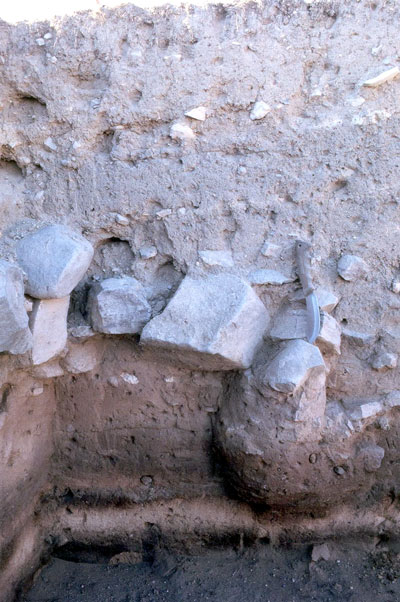![]()
Suelos y Arqueología: Una Introducción para Arqueólogos (Manual de Libre Acceso en Internet y Más)
No cabe duda que la edafología tiene mucho que decir en diversos estudios arqueológicos. Se trata de un tema apasionante. Sin embargo, para ser sinceros, no soy experto en la materia. He acompañado a algunos arqueólogos hace años, pero desconozco bastante lo que puede ser relevante y lo que no, así como las novedades teóricas e instrumentales aparecidas en el mercado durante la última década. El otro día encontré en el ciberespacio un documento muy sencillo, breve y didáctico, con vistas a iniciar a los arqueólogos en el reconocimiento e interpretación de los suelos en los enclaves de los yacimientos. Lamentablemente se encuentra escrito en la lengua del imperio (el suahili). Tras revisarlo, constaté que también podría servir para jóvenes estudiantes de otras disciplinas. El libro consta de poco más de 30 páginas y es sumamente sencillo. Podéis bajároslo pinchando aquí: Ciencia del Suelo para Arqueólogos. Del mismo modo, en el siguiente enlace se ofrece bibliografía de interés al respecto, como por ejemplo la siguiente monografía, aunque hay más………..

Los suelos en arqueología. Fuente: Virtual Karar Resources project
Holliday, Vance T. 2004. Soils in Archaeological Research.
[As of 2007, most up-to-date and comprehensive text on soils and archaeology. Numerous examples of studies, including sections on: Terminology and Methodology; Conceptual Approaches to Pedogenesis; Soil Surveys and Archaeology; Soil Stratigraphy; Soil Stratigraphy in Geoarchaeological Contexts; Soils and Time; Soils and Paleoenvironmental Reconstructions; Soils and Landscape Evolution; Soil Genesis and Site-Formation Processes; Human Impacts on Soils; Variations on U.S. Department of Agriculture Field Nomenclature; Soil Phosphorus: Chemistry, Analytical Methods, and Chronosequences; and Variability of Soil Laboratory Procedures and Results.
El libro enlazado ha sido escrito por Stewart Reed, Nathan Bailey y Oghenekome Onokpise y lo considero muy recomendable. Reitero que, lamentablemente, todo este material ha sido escrito en Suahili. En otra ocasión, os ofreceré más información en español castellano, si existe (supongo que si). Seguidamente, reproduzco una introducción en inglés que he extraído pinchando el hipervínculo enlazado al título. Se trata de una página Web con más material que también puede ser de vuestro interés.
Carátula del libro de “Suelo para arqueólogos
Juan José Ibáñez
John E. Foss, Yul Roh,
and
The disciplines of soil science and archaeology make a natural combination to study landscapes and environmental history of sites from previous civilizations. Archaeologists have been excavating sites for centuries, but scientific excavations have only taken place for perhaps the last 70 to 80 years. Soil science has been involved in archaeological excavations for 50 to 60 years in the United States, but in the early years only soil chemistry was used to evaluate the impact of humans on the soil system. In the last few decades, more sub-disciplines of soil science have become interested in the archaeology, especially pedology (study of soil formation and classification). In many archaeological projects, pedology is one member of a team of scientists studying a site; team members may include scientists from geology, botany, zoology, palynology, surveying, and other disciplines.
Perhaps a definition of soil is in order to establish the boundaries and general nature of this natural resource. Soils are defined as natural bodies on the earth’s surface with unique morphological characteristics resulting from past or present combinations of physical, chemical, and biological weathering processes. The upper boundary is clearly defined but the lower boundary is quite variable; generally soils include the upper 2 meters of the earth’s surface. Soils, however, will vary from just a few centimeters in thickness to 20 to 30 meters in some areas of the tropics. This upper surface of the earth’s crust is where most of the archaeological activity takes place and thus the interest in soils.
The applications of soil science to archaeology used in this article come from the study of al-Mudaybi’, a Moabite fort, and from the survey of sites on the Karak Plateau in
The study of soils at archaeological sites includes two major components; these are the (1) field study of landscapes and description of individual soil profiles and (2) laboratory characterization of soils. The field study comprises a vital aspect for all future interpretations of stratigraphy and ultimately the environmental history of the site. Field soil morphology includes detailed evaluation of soil horizons that provide descriptions of soil texture, structure, color, consistence, horizon boundaries and classification. Figure 1 shows a soil profile (cross section of soil) in Field A at al-Mudaybi’; note the alternating dark and light-colored bands in the lower portion of the profile. The dark layers are periods of stability when organic matter was accumulating in the soil from plant decomposition, and light-colored zones are areas of rapid deposition of wind-blown sediment. Many archaeological sites are in a dynamic position on the landscape, such as along rivers and streams, base of colluvial slopes, or in areas of eolian (wind) deposition. Loess deposits (Figure 2) were the dominant parent material for soils on the Karak Plateau, although a wide range of loess thickness occurs on the various landscapes.
Laboratory characterization of soils for archaeological interpretations is used to verify and supplement the field morphology of soil profiles. In addition, laboratory analysis can provide information on soil system modification resulting from human occupation. One of the best examples is the amount of Pb and other heavy metals introduced into soil systems during Roman times in the Mediterranean region.

[…] Suelos y Arqueología: Una Introducción para Arqueólogos … […]